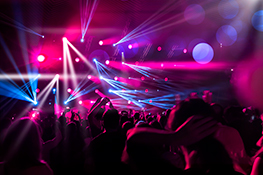The Ultimate Guide to LED Beam Lights: Specs, Applications, & Top Picks for 2025
Understanding LED Beam Light Technology
LED beam lights have revolutionized the stage lighting industry, offering unparalleled brightness, energy efficiency, and control. Unlike traditional discharge lamps, LEDs boast a longer lifespan, instant on/off capabilities, and a wide range of color mixing options. This guide delves into the key specifications to consider when selecting the right LED beam light for your next production.
Key Specifications to Consider
Power Consumption (Watts):
A lower wattage doesn’t automatically mean less brightness. Look for high lumens-per-watt ratings for efficient performance.
Luminous Flux (Lumens):
This measures the total amount of visible light emitted. Higher lumens indicate greater brightness.
Beam Angle:
Beam angle determines the spread of light. Narrow beam angles (e.g., 5-15 degrees) create concentrated, powerful beams ideal for long throws and dramatic effects. Wider angles (e.g., 25-40 degrees) are suitable for wash lighting.
Throw Distance:
The distance the light can effectively project. This depends on the lens and power of the fixture.
Color Temperature (Kelvin):
This determines the “warmth” or “coolness” of the light. Lower Kelvin values (e.g., 2700K) produce warmer, yellowish light, while higher values (e.g., 6500K) produce cooler, bluish light.
Color Rendering Index (CRI):
CRI indicates how accurately a light source renders colors compared to natural sunlight. A higher CRI (closer to 100) provides more accurate color representation.
Color Mixing System (RGB, CMY, RGBA, etc.):
Understanding the color mixing system allows you to select fixtures that can produce the exact color palettes you need.
DMX Control:
DMX (Digital Multiplex) is the industry standard for controlling stage lighting. Ensure your chosen fixture is DMX compatible and understands the desired protocol.
Strobe/Pulse Effects:
Many beam lights offer strobe or pulse effects to create dynamic and exciting visual displays.
IP Rating:
The IP rating indicates the level of protection against dust and water ingress, crucial for outdoor or demanding environments.
Applications of LED Beam Lights
LED beam lights are versatile and find application in various settings:
- Live Concerts & Performances: Creating dramatic aerial effects, highlighting performers, and setting the mood.
- Theatrical Productions: Offering precise control over lighting cues and color palettes for storytelling.
- Nightclubs & Events: Generating vibrant and dynamic atmospheres with intense beams and effects.
- Architectural Lighting: Highlighting buildings and structures with powerful, long-throw beams.
- Film & Television: Providing sharp, focused lighting for specific scenes and effects.
Top Picks for 2025: A Curated Selection
(Note: Specific product recommendations would be included here, linking to product pages on stagelights.in. This section requires up-to-date market research and should include a variety of price points and features to cater to different budgets and needs.)
Choosing the Right LED Beam Light for Your Needs
The optimal LED beam light depends on your specific requirements. Consider your budget, the size of the venue, the desired effects, and the level of control needed. Carefully reviewing the specifications detailed above will help you make an informed decision.
Conclusion
LED beam lights offer a powerful and efficient solution for a wide range of lighting applications. By understanding the key specifications and considering your specific needs, you can choose the perfect LED beam light to illuminate your next project.


 Auditorium Construction Services
Auditorium Construction Services 